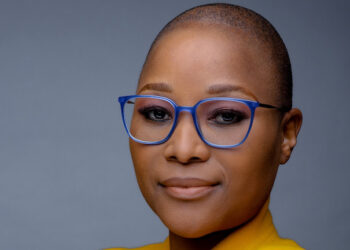What with the upheaval in the out of home industry last week, and one of the major players opting out of OHMSA, the industry appears to be going through a transition. Add to this the recent OHMSA awards and changing of the organisation’s guards, has led Gordon Patterson t0 ask that work be done to fix this sector’s problems, in story first published in The Media magazine.
I’ve always looked at the out-of-home (OOH) advertising industry as a bit of a ‘Cinderella’ medium – full of untapped potential.
Over the years I’ve expressed my views on this and my concern regarding the general lack of good, strategically relevant creative work. I may not be an expert in creativity, nor do I want to be seen as one, but I would like to think that I understand how the public consumes this medium. That said, there have been improvements and, as a media professional, I certainly applaud these developments.
Globally, the total OOH industry is worth in excess of US$30.4 billion and, while this is a small percentage of the total global advertising investment, it is significant in emerging countries such as ours.
Technology has driven this growth globally by introducing new formats and sizes as well as the explosion of non-traditional solutions including building wraps, laser and 3D billboards. In addition, various placements or locations have become more popular contact points such as transit advertising –the fastest-growing OOH European segment.
In South Africa, the health and well-being of the OOH industry is not what it could be, based on total OOH advertising investment as measured by Ad Dynamix. This shows that, between 2007 and 2010, there was a modest 5.6% growth in advertising investment and an accompanying decline in the OOH share of the total advertising investment from 4.95% to 4.24%.
Given the indisputable trend among many market segments to spend more time out of home than ever before, the fact that OOH appears to be attracting less income is worrying. Why?
Change should be present across many areas, but within the OOH segment it has been microscopic. Certain new technologies have been revitalised. There have been several company mergers and takeovers (together with name changes), and media owners have become more professional as better, more educated young people enter this field. Yet little has changed.
The big companies have got bigger and ergo better… but is this sustainable? Numerous case studies demonstrate that the converse is certainly more sustainable – i.e. to become bigger by being better versus better by being bigger.
Marketing or consumer insights are not at the centre of many OOH companies, production is; and as we know, production costs for all products are coming down and mostly becoming parity issues. As costs decline, the business becomes bitter, corners are cut and the decline becomes a self-fulfilling prophecy!
While this is happening, many small ‘cottage companies’ are struggling to survive. These are largely BEE initiatives, which must be allowed to prosper in a free enterprise environment since they represent ‘real competition’ and a breeding ground for talent and entrepreneurial forces. Realistically many of these, due to their size and community focus, have superior sites and offerings – yet cannot easily connect with purchasers, the media independents or clients due to limited resources.
These small independent media owners, in an effort to secure their rightful share of the advertising pie, approach the OOH brokers and independent consultants and incentivise them accordingly.
Yet OHMSA has spent most of the past 10 years refereeing squabbles between contractors and splitting hairs over the legality of sites. OHMSA should play a consistently bipartisan leadership role and create positive momentum for the medium.
For OOH in SA to regain its position and share of the total advertising pie, OOH companies need to be more marketing-orientated, less production-reliant and have more in common with their overseas colleagues in terms of campaign flexibility. Media agencies and clients need to deal with objective consultants who have access to all available inventories. No single OOH company can do it all!
Competition is the way to address the issue, and I believe that OHMSA is ideally positioned to create an independent entity with proportionate shareholder interest to promote and provide trustworthy and respected objective bipartisan solutions – as, in fact, we’ve grown to trust the independent brokers.
We’re aware that OHMSA has new leadership and, for this reason, it’s relevant for all involved in the OOH industry to voice an opinion on whether OHMSA should become an accelerator or anchor to the industry, realising its full potential. If there is no change, the result will also not change.
In conclusion, the OOH industry has come a long way from the old cowboy days – it’s professional, well-run and efficient. But is this enough? Do the major players (including OHMSA) have the maturity to set aside their differences and focus on delivering objective (credible) and well-priced solutions?
Time will tell.














